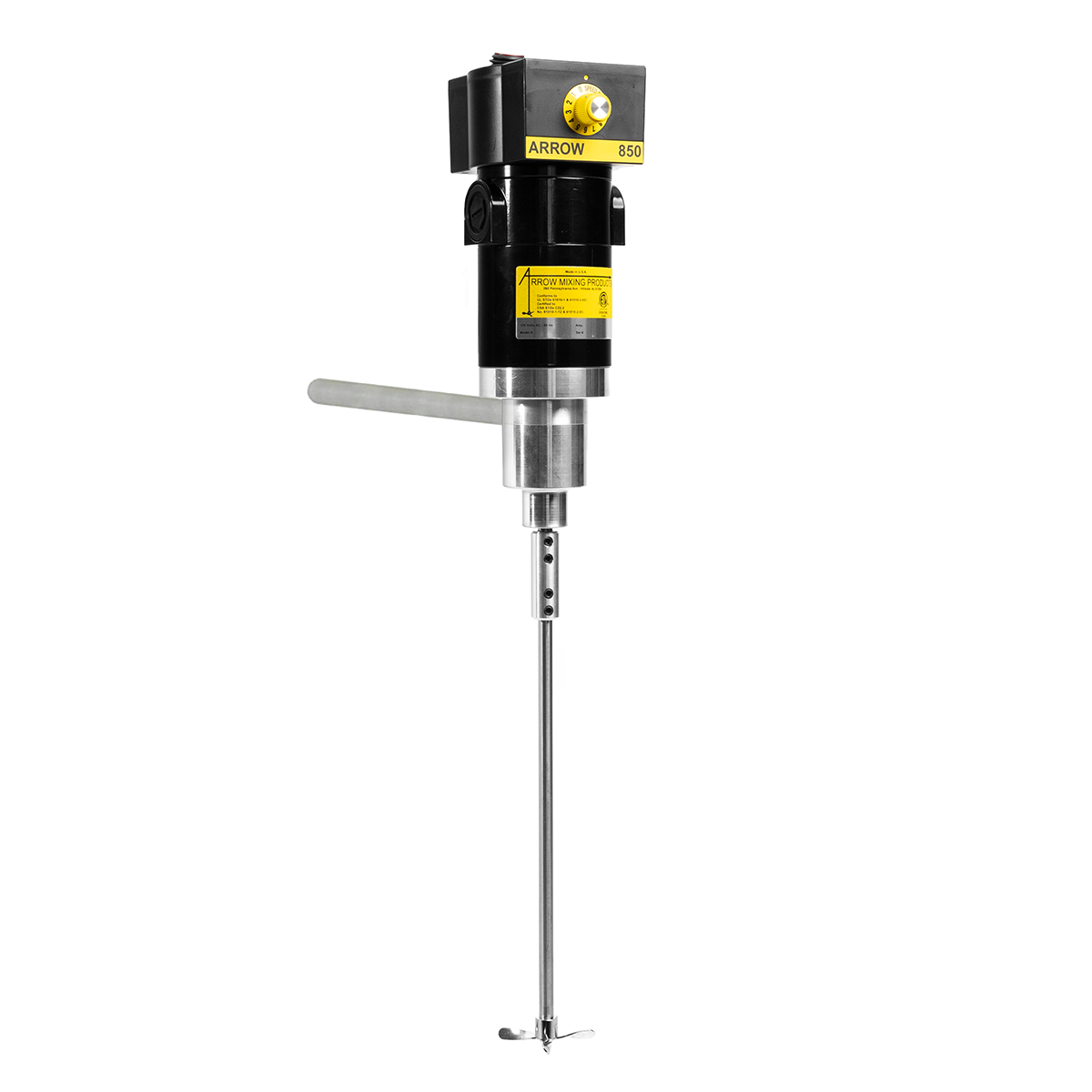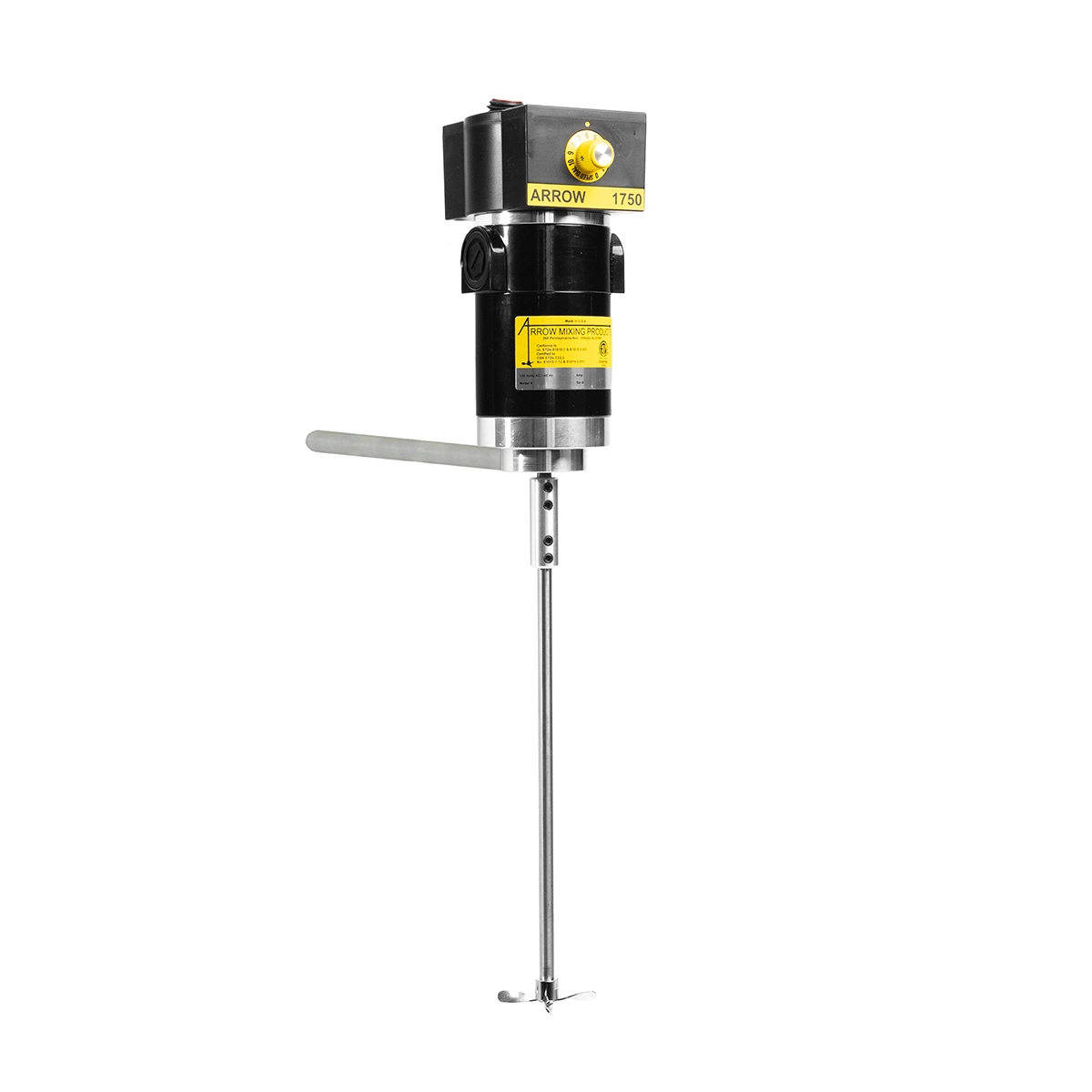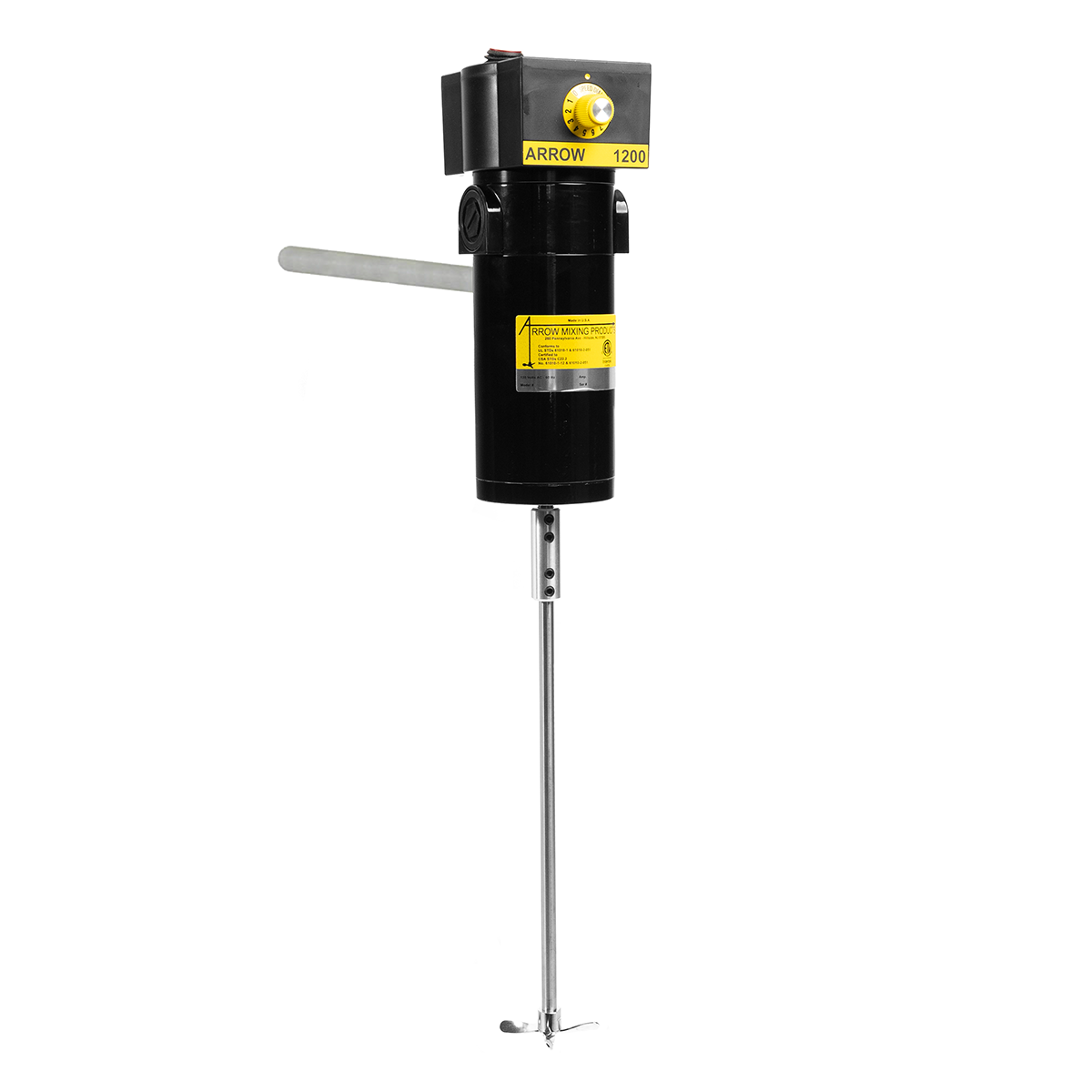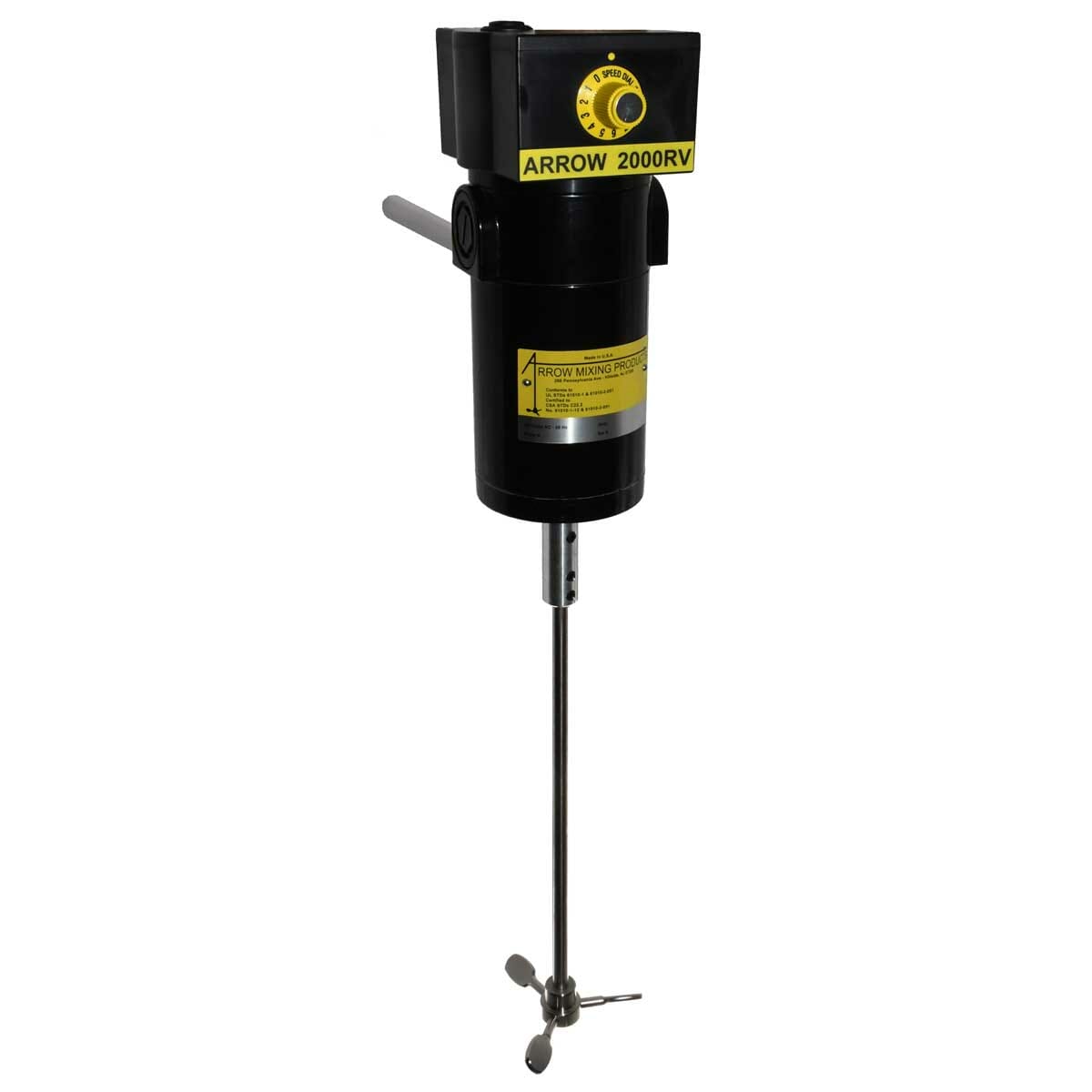Our large inventory ensures that you can find the exact type of overhead stirrer you need without the hassle of browsing multiple distributor websites.
-
-

-
Arrow Engineering Light-duty Electric Overhead Sti...
Electric Overhead Stirrer, 14 x 12 x 7", 4000 rpm, 1/40 Horsepower, 20 L Batch Size Water, Direct Gear Ratio, 0.66" lb Torque, 120 V, 60 Hz, 0.51 A Power Consumption, 0.31" dia Motor Shaft, Light Duty
-
-
-

-
- SECO Part No: 22-2160-02
- Sold As:
-
Availability:

Caframo BDC3030 Model Cast Aluminum Housing Univer...
Universal Overhead Stirrer, 60 L, Cast Aluminum Housing, 20 to 3000 rpm, BDC3030 Model, 341 Ncm Torque, 50,000 mPas Viscosity, 120 V, 50/60 Hz, 150 W, Torque Display, 5 to 40°C Ambient Temperature, 80% Relative Humidity, Clockwise Only RotationUniversal Overhead Stirrer, 60 L, Cast Alumin More...
-
Login to View Your Price
List Price :
-
Add to cart
-
-
-

-
- SECO Part No: 22-2160-01
- Sold As:
-
Availability:

Caframo BDC1850 Model Cast Aluminum Housing Ultra ...
Ultra Torque Overhead Stirrer, 80 L, Cast Aluminum Housing, 12 to 1800 rpm, BDC1850 Model, 568 Ncm Torque, 90,000 mPas Viscosity, 120 V, 60 Hz, 150 W, Torque Display, 5 to 40°C Ambient Temperature, 80% Relative Humidity, Clockwise Only RotationUltra Torque Overhead Stirrer, 80 L, Cast Alu More...
-
Login to View Your Price
List Price :
-
Add to cart
-
-
-

-
Wilmad LabGlass Stirrer
Stirrer, 24/40 Standard Taper Joint, Includes PTFE Stirrer Bearing, PTFE Bushing, Saddle O-ring, Threaded Heavy Wall Glass Adapter, and Top Cap
-
-
-

-
- SECO Part No: 22-1778-01
- Sold As:
-
Availability:

Arrow Engineering Medium/ Heavy Duty Electric Over...
Electric Overhead Stirrer, 16 x 14 x 9", 1000 rpm, 1/10 Horsepower, 100 L Batch Size Water, 7 to 1 Gear Ratio, 7.35" lb Torque, 120 V/230 V, 50/60 Hz, 1.4 A Power Consumption, 0.37" dia Motor Shaft, Medium/Heavy DutyElectric Overhead Stirrer, 16 x 14 x 9", More...
-
Login to View Your Price
List Price :
-
Add to cart
-
-
-

-
- SECO Part No: 22-1774-01
- Sold As:
-
Availability:

Arrow Engineering Medium Duty Electric Overhead St...
Electric Overhead Stirrer, 12 x 12 x 7", 2000 rpm, 1/15 Horsepower, 20 L Batch Size Water, Direct Gear Ratio, 2.43" lb Torque, 120 V/230 V, 50/60 Hz, 0.8 A Power Consumption, 0.37" dia Motor Shaft, Medium DutyElectric Overhead Stirrer, 12 x 12 x 7", More...
-
Login to View Your Price
List Price :
-
Add to cart
-
-
-

-
- SECO Part No: 22-2160-07
- Sold As:
-
Availability:

Caframo 1540 Model Flame Retardant Nylon 6 Crossov...
Crossover Overhead Stirrer, 200 L, Flame Retardant Nylon 6, 50 to 1500 rpm, 1540 Model, 3000 Ncm Torque, 180,000 mPas Viscosity, 120 V, 60 Hz, 300 W, Torque Display, 5 to 40°C Ambient Temperature, 80% Relative Humidity, Clockwise and Counterclockwise RotationCrossover Overhead Stirrer, 200 L, Flame Reta More...
-
Login to View Your Price
List Price :
-
Add to cart
-
-
-

-
- SECO Part No: 22-1775-01
- Sold As:
-
Availability:

Arrow Engineering Durable Heavy Duty Electric Over...
Electric Overhead Stirrer, 16 x 14 x 9", 1200 rpm, 1/8 Horsepower, 100 L Batch Size Water, Direct Gear Ratio, 6.6" lb Torque, 120 V, 60 Hz, 1.5 A Power Consumption, 0.37" dia Motor Shaft, Heavy Duty, DurableElectric Overhead Stirrer, 16 x 14 x 9", More...
-
Login to View Your Price
List Price :
-
Add to cart
-
-
-

-
- SECO Part No: LS-3000X
- Sold As:
-
Availability:

Fawcett Lab Stirrer, 1.8 HP
Lab Stirrer, 1.8 HP, with Powerhead (with 0.5" Chuck), L-4 Clamp Block, AX-23 Stand, MF-32H Impeller, MF-43H Impeller, MF-53H Impeller, SA-12 Shaft, (two) SB-18 Shafts and AH-5 Hose AssemblyLab Stirrer, 1.8 HP, with Powerhead (with 0.5 More...
-
Login to View Your Price
List Price :
-
Add to cart
-
-
-

-
- SECO Part No: 22-1775-02
- Sold As:
-
Availability:

Arrow Engineering Heavy Duty Electric Overhead Sti...
Electric Overhead Stirrer, 16 x 14 x 9", 2000 rpm, 1/9 Horsepower, 200 L Batch Size Water, Direct Gear Ratio, 4.6" lb Torque, 120 V, 60 Hz, 1.3 A Power Consumption, 0.37" dia Motor Shaft, 4.5" dia Propeller, Medium DutyElectric Overhead Stirrer, 16 x 14 x 9", More...
-
Login to View Your Price
List Price :
-
Add to cart
-
-
-

-
- SECO Part No: 22-1672-01
- Sold As:
-
Availability:

Fawcett Powerhead with 0.5" Chuck, For LS-2000X Se...
Powerhead, 1HP Max, Includes 20A Motor, with 0.5" Cap. Chuck, 02V Valve, K1-6 Muffler, 02/03 Rod-Ring Mount, For LS-2000X Series 1 Horse Power Lab StirrerPowerhead, 1HP Max, Includes 20A Motor, with More...
-
Login to View Your Price
List Price :
-
Add to cart
-
-
-

-
Arrow Engineering Heavy-duty Air Powered Overhead ...
Air Powered Overhead Stirrer, 14 x 12 x 7", 3000 rpm, 0.75 Horsepower, 200 L Batch Size Water, Direct Gear Ratio, 28" lb Torque, 20 cfm Air Consumption, 40 to 100 psi Air Input, 0.5" dia Motor Shaft, Heavy Duty
-
















